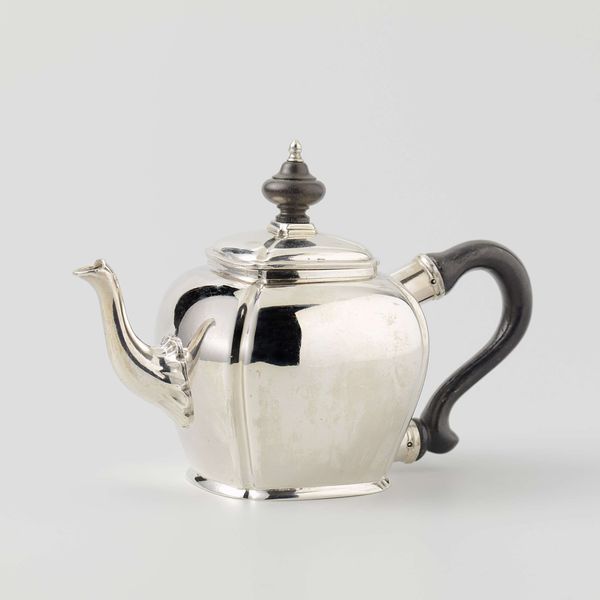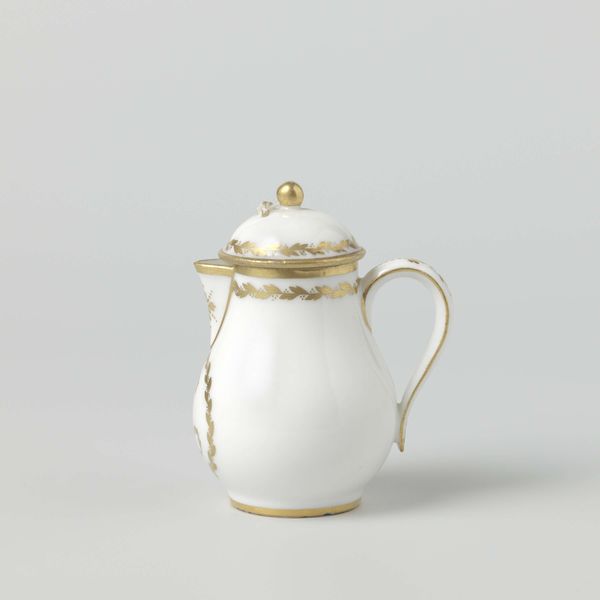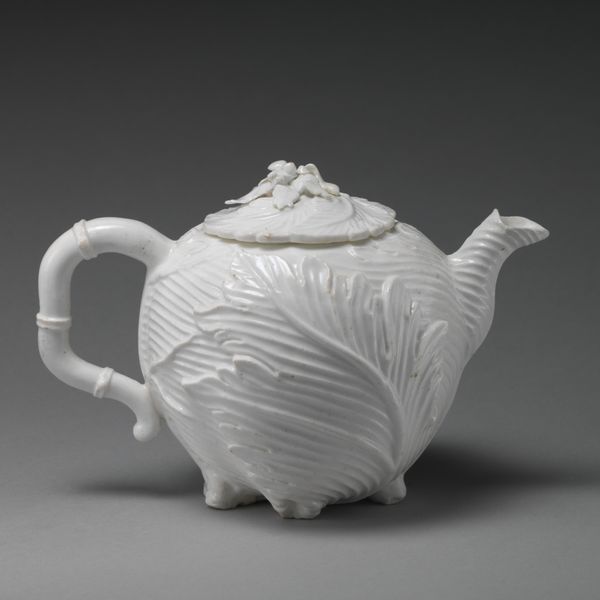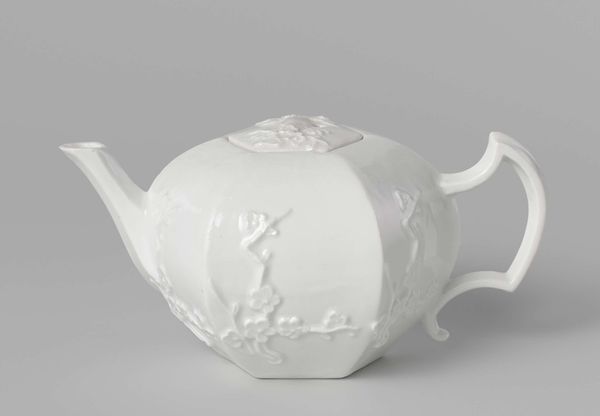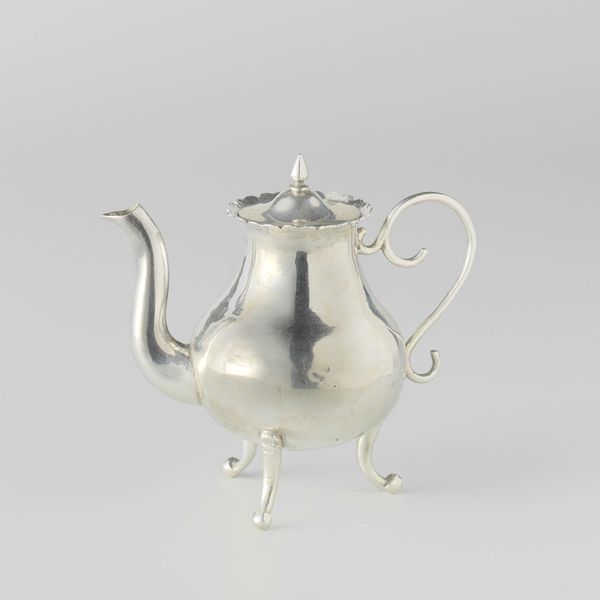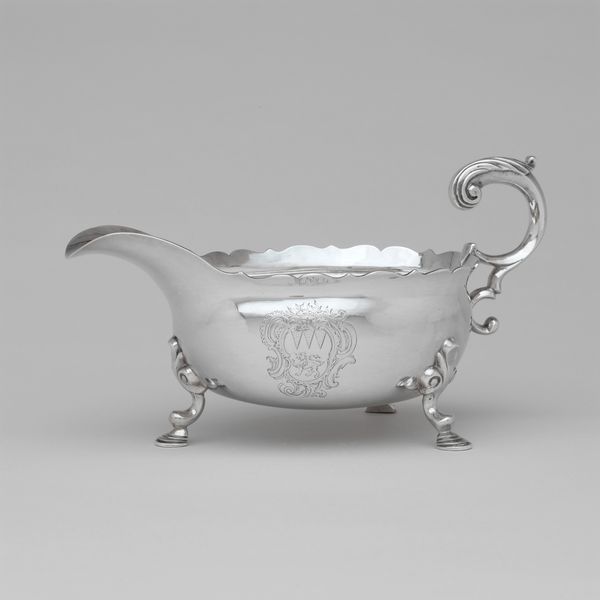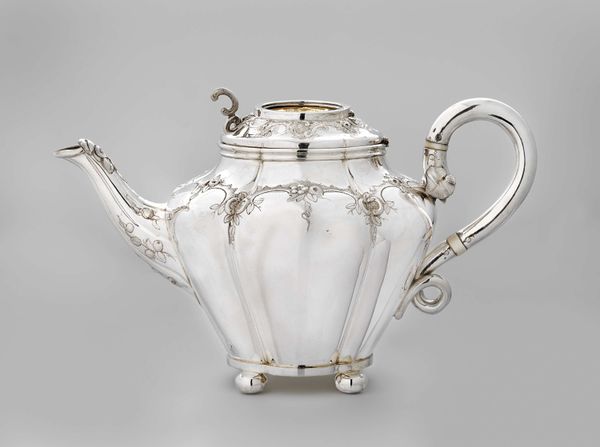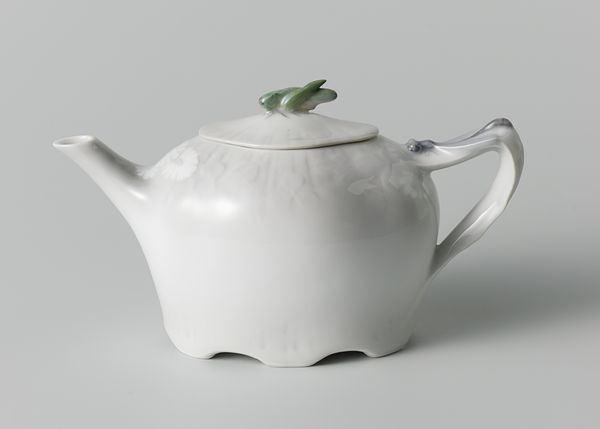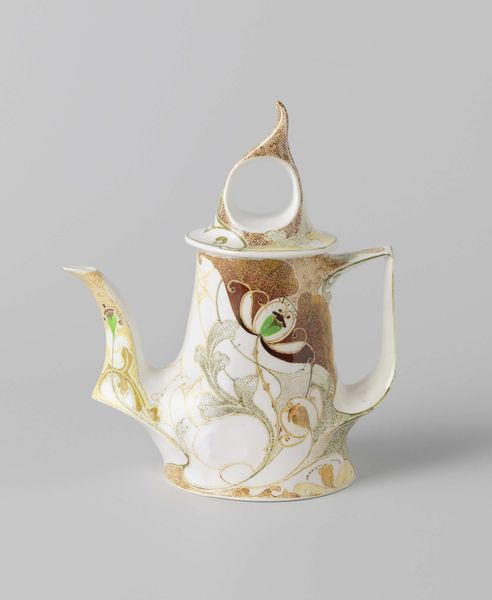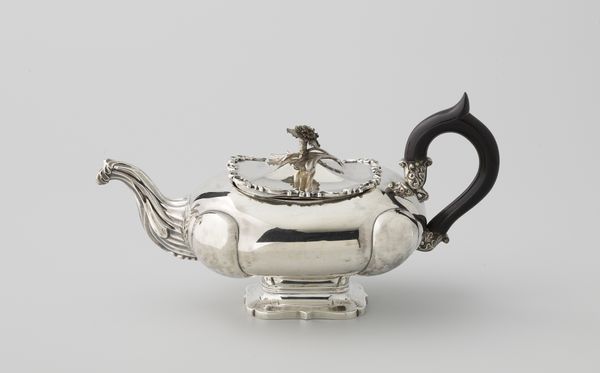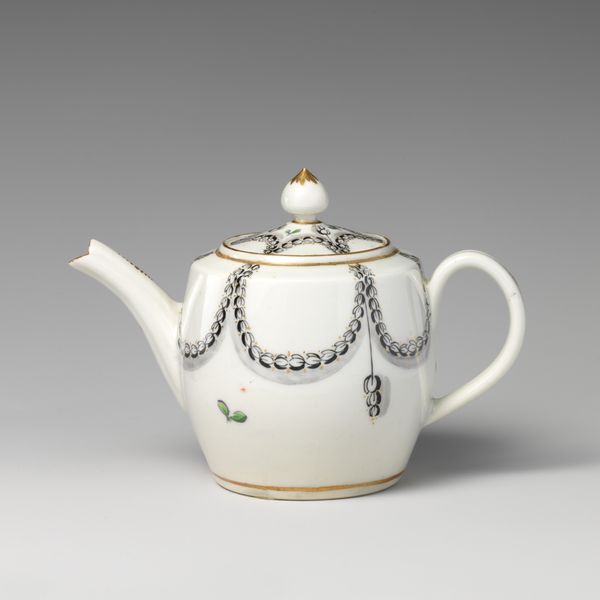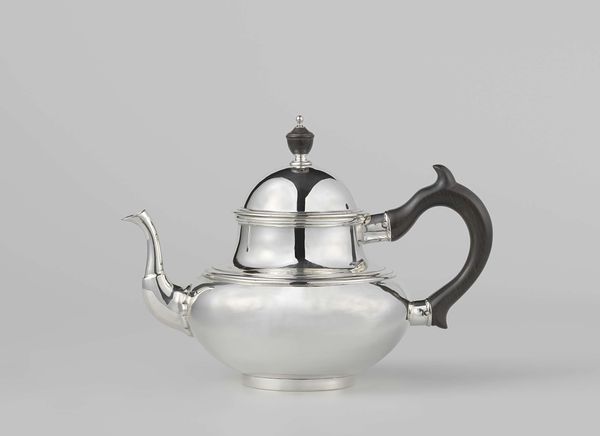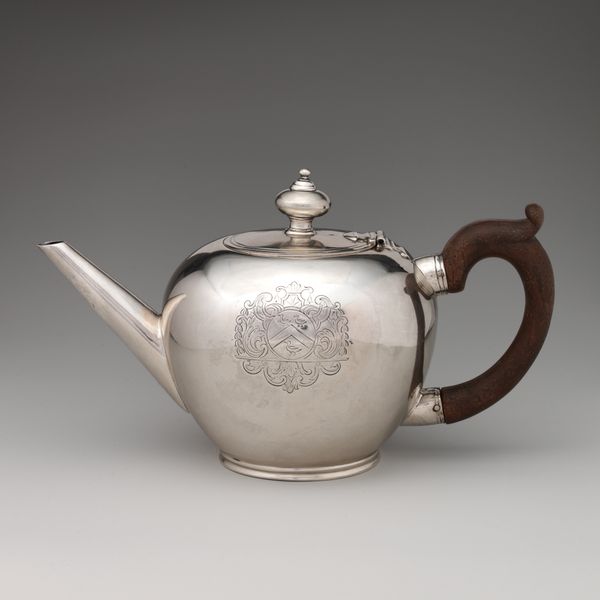
Dimensions: height 13.0 cm, width 18.3 cm, depth 10.3 cm, diameter 8.9 cm
Copyright: Rijks Museum: Open Domain
Curator: Welcome, everyone. Today, we're looking at a fascinating piece: the "Theepot, meloenvormig," or Melon-shaped Teapot, crafted by Willem Schiff around 1778-1779. Editor: Immediately, it strikes me as surprisingly functional and ornate at once. The material itself, what looks like highly polished silver, creates this wonderful dance of light. Curator: Precisely! This teapot embodies the Rococo style's embrace of ornamentation, blurring the lines between functionality and sheer aesthetic pleasure. It reflects the Dutch elite's obsession with refinement. We must think about who was drinking tea from it. Editor: Thinking about the process of its creation—imagine the labour involved in shaping and polishing that metal into this complex form! The handle looks as though it could be ebony. You also have to imagine the lives involved with procuring and refining the material. The division of labour is right here in the teacup. Curator: The form of the melon itself is intriguing. Melons, by this point in time, held complex associations with status and global trade networks. Editor: Exactly! And even its position within the house. What table did this sit on? Was it brought out as a symbol? Where does this sit in a social and economic context? This is a world of refinement powered by global colonial machinations. This tiny object conceals incredible complexity and the process reveals so much more. Curator: It serves as a reminder that these luxurious objects weren’t simply pretty things; they were material manifestations of power structures. Editor: Looking closer reveals such meticulous craftsmanship! See how each leaf and floral detail seems individually rendered? I am interested in that detail—what does the floral design reference, if anything? It makes it more compelling to think about the people behind it—the laborers—more than we otherwise might. Curator: Definitely, viewing it through a social and political lens deepens our understanding, which I would suggest leads us to question what we choose to display and celebrate. It highlights the inherent inequalities interwoven within systems. Editor: The sheen of silver belies the realities of extraction, labour, and trade. That surface reflects more than just light; it reflects an era of consumption underpinned by profound inequities. Curator: This brings to light how everyday objects can expose so many interconnected systems and highlight important critical discussions about the objectification of persons within production and gendered identities that are both embedded and obfuscated in Rococo designs. Editor: Precisely. Every stage—from procuring raw materials to design and construction—was intensely collaborative and leaves tangible traces behind. Curator: And that's a crucial reminder – seeing artworks, even something as seemingly simple as this teapot, as evidence.
Comments
No comments
Be the first to comment and join the conversation on the ultimate creative platform.
